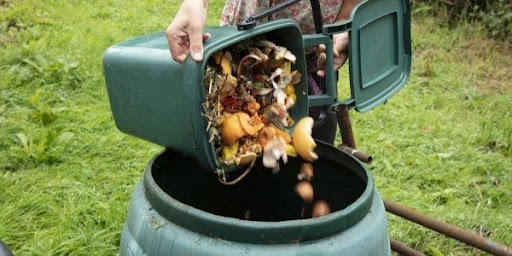
If you’re looking for extra ways to live more sustainably, try picking up composting.
Find out how to start composting at home or right in your backyard.
If you want to do more for environmental sustainability but don’t know where to start,
try out composting. Composting is a great way to keep compatible waste out of
landfills, and it’s a lot easier to get started than most people assume. Plus, if you
have a garden, composting is a great alternative to buying traditional fertilizer for
growing plants. Here are the basics of composting at home and how you can
easily get started today.
What You Can and Can’t Compost
Compost is often sorted by “greens and browns.” Greens are moist, nitrogen-rich
materials such as fruit and vegetable scraps, coffee grounds, grass clippings, and
tea leaves and bags. Browns are dry, carbon-rich materials such as dry leaves,
paper, twigs, and sawdust. On the other hand, you should never compost any of the
following: oils, baked goods, treated sawdust or wood, weeds, fertilizer, or plastic or
other synthetic products.
How To Compost at Home
Depending on where you want your bin located, there are a couple different ways to
compost at home. Choose your spot and start sorting your garbage.
Outdoor
Start by selecting the location for your outdoor composting spot. You can either
designate a certain spot in your backyard or use a composting bin. Break up your
pieces of compostable materials to the best of your ability. Then, start the pile by
adding layers of “browns” and “greens,” alternating between the two types. This
practice will prevent pests from seeking out your pile as well as odor. Adding water
to dry materials to moisten them promotes a faster breakdown process. Finally,
cover your composting area with a tarp to keep in moisture.
Indoor
Indoor composting requires a few more materials. To avoid attracting pests or
causing a harsh smell in your home, make sure to invest in a special type of indoor
bin. You can find this and more supplies for indoor composting at your local
hardware store. Once you’ve installed the bin, you can start layering brown and
green materials.
Compost can take anywhere from two months to two years to fully break down, so
have patience with this practice. You’ll know when compost is ready to be used for
fertilizer when the material turns a dark, rich color like that of soil.
Now you can take these basics of composting at home and start your own bin.
Composting has so many benefits, including keeping waste out of landfills and
improving soil quality. And when you make your own composting fertilizer, you
negate the need for more harmful chemical varieties. Overall, composting is a
healthy and sustainable habit that you can try at home.

